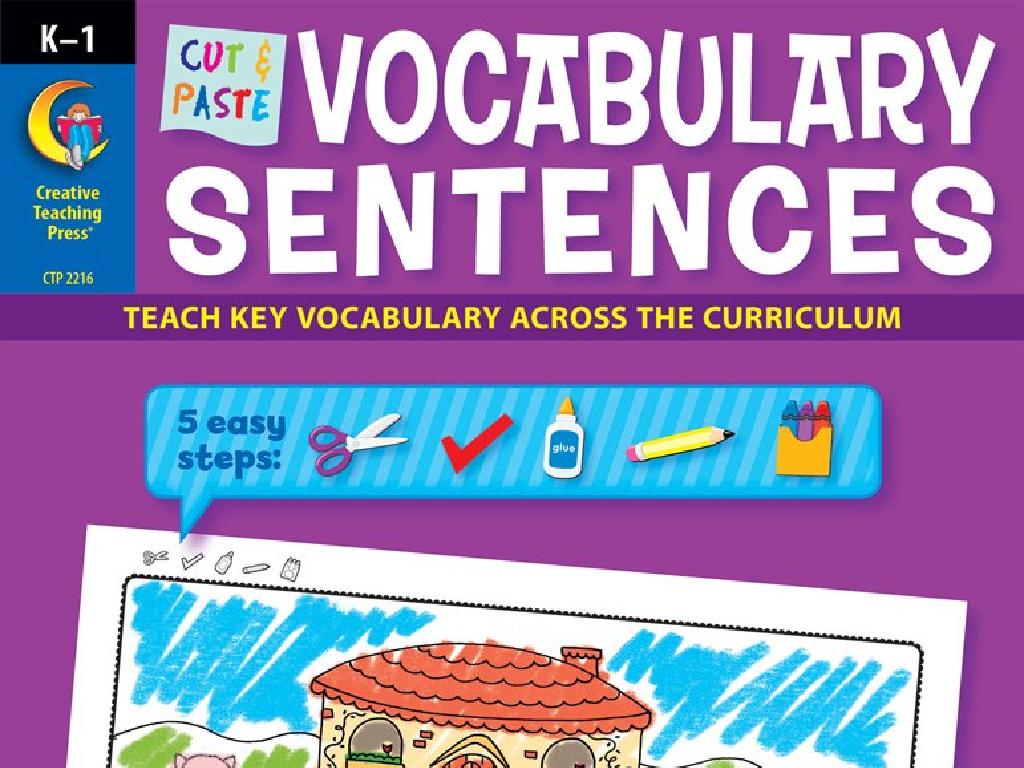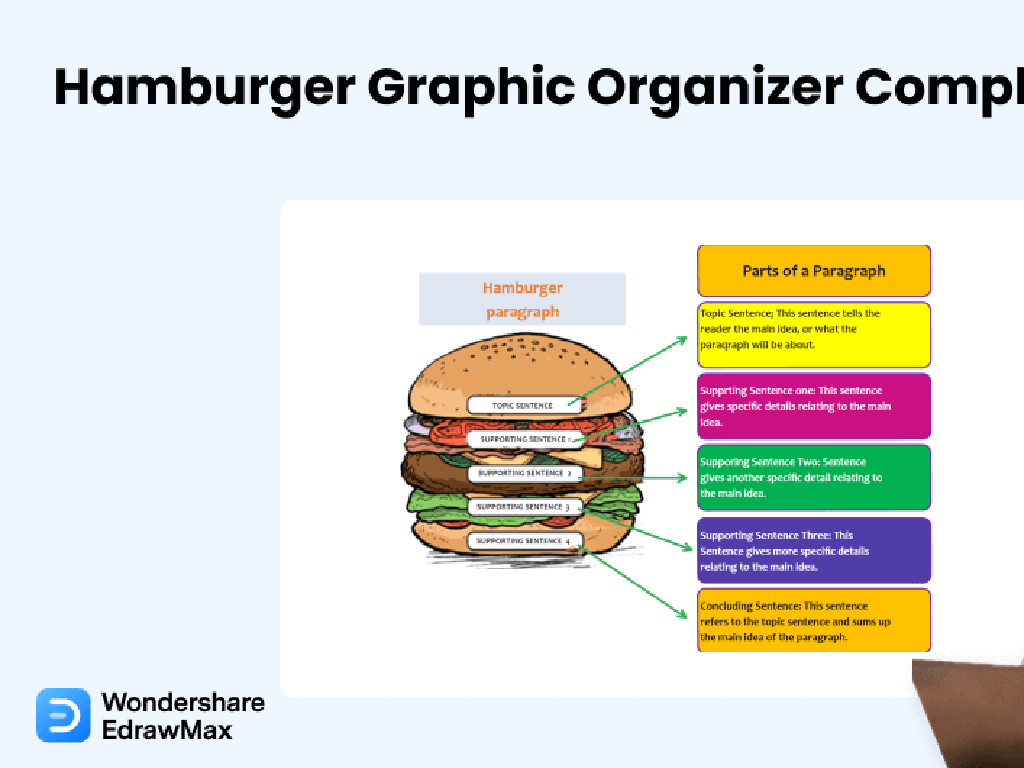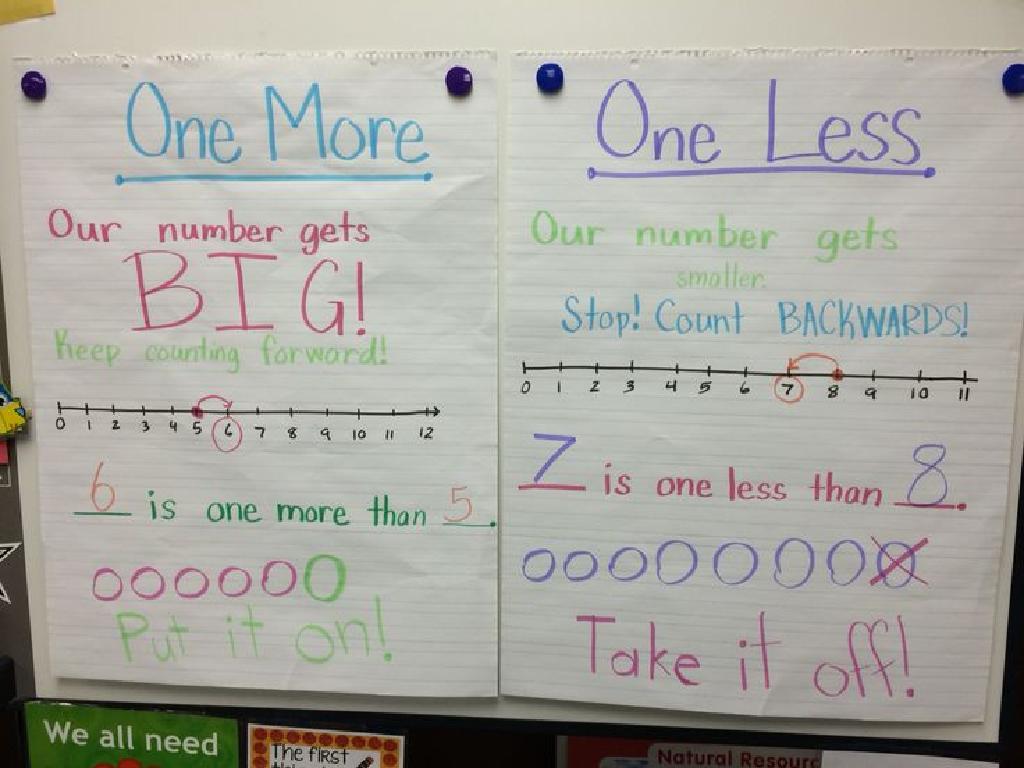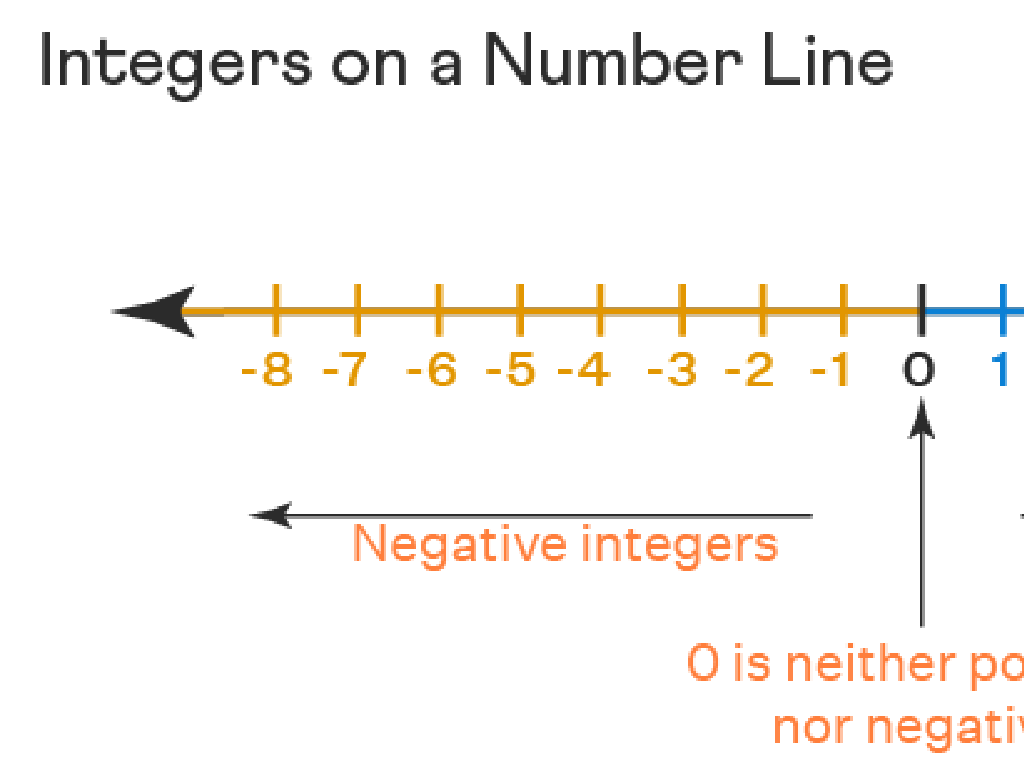Identify The Simple Subject Or Predicate Of A Sentence
Subject: Language arts
Grade: Fifth grade
Topic: Sentences, Fragments, And Run-Ons
Please LOG IN to download the presentation. Access is available to registered users only.
View More Content
Understanding Sentences in Language Arts
– What makes a complete sentence?
– A sentence has a subject, predicate, and a complete thought.
– Sentence fragments vs. run-ons
– Fragments are incomplete thoughts, run-ons are too many joined ideas.
– Identifying the subject
– The subject is who or what the sentence is about.
– Finding the predicate
– The predicate tells us what the subject does or is.
|
Begin the class by discussing the components of a complete sentence and how it differs from fragments and run-ons. Explain that every sentence needs a subject (the main noun) and a predicate (the verb or action). Use examples to illustrate sentence fragments, which lack a main subject or verb, and run-ons, which improperly combine multiple ideas without punctuation. Engage the class with examples on the board, asking them to identify subjects and predicates. Provide exercises where students can practice distinguishing between complete sentences, fragments, and run-ons.
Understanding Sentences
– Definition of a sentence
– A sentence is a complete thought expressed by words.
– Main parts: subject and predicate
– Every sentence contains a subject and a predicate as its main parts.
– The subject: ‘who’ or ‘what’
– The subject is the focus of the sentence, telling us about the person or thing.
– The predicate: actions or state
– The predicate describes what the subject is doing or what condition it is in.
|
This slide introduces the basic components of a sentence to help students identify the simple subject and predicate. A sentence is not just a random collection of words; it must convey a complete idea. The subject part of a sentence informs us about ‘who’ or ‘what’ is being discussed, while the predicate explains what the subject is doing or what state it is in. Use examples to illustrate these points, such as ‘The dog (subject) barked loudly (predicate).’ Encourage students to practice by identifying subjects and predicates in sample sentences. This foundational knowledge will aid in their understanding of more complex sentence structures.
Identifying the Simple Subject
– What is a simple subject?
– The main word in the subject part of a sentence
– Usually a noun or pronoun
– It tells us who or what the sentence is about
– Example: ‘The cat sleeps on the mat’
– In our example, ‘cat’ tells us who is doing the sleeping
– ‘Cat’ is the simple subject
|
The simple subject of a sentence is the main word that tells us what or who the sentence is about. It’s often a noun or pronoun. When teaching this concept, use clear examples to illustrate the simple subject. For instance, in the sentence ‘The cat sleeps on the mat,’ the word ‘cat’ is the simple subject because it’s the main focus of the sentence. Encourage students to identify the simple subject in various sentences and explain that it can be just one word, even if the subject part of the sentence contains other words. Provide additional examples and practice sentences for students to work on as a class or in groups.
Identifying the Simple Predicate
– What is a simple predicate?
– The main verb in a sentence’s predicate
– Simple predicate function
– It shows the action or state of the subject
– Example sentence
– ‘The cat sleeps on the mat.’
– Identifying ‘sleeps’ as predicate
– ‘Sleeps’ tells us what the cat does
|
The simple predicate is an essential part of a sentence, as it tells us what action the subject is performing or what state it is in. It’s usually the main verb or verb phrase in the predicate part of a sentence. For example, in ‘The cat sleeps on the mat,’ the word ‘sleeps’ is the simple predicate because it describes the action of the cat. To help students identify the simple predicate, ask them to find the verb in the sentence that tells what the subject is doing. Practice with more examples in class to reinforce this concept.
Understanding Sentence Fragments
– What is a sentence fragment?
– A fragment is an incomplete sentence.
– Fragments lack elements
– Missing a subject, predicate, or both.
– Fragments don’t express full thoughts
– It leaves the reader with questions.
– Example: ‘Running through the park.’
– Who is running through the park?
|
This slide introduces the concept of sentence fragments, which are incomplete sentences that students will learn to identify and correct. Emphasize that a complete sentence needs both a subject (who or what the sentence is about) and a predicate (what the subject is doing). Fragments fail to provide a complete thought, leaving the reader with questions. Use the example ‘Running through the park.’ to illustrate a fragment that lacks a clear subject. Ask students to think of possible subjects that could complete the thought. This exercise will help them understand the importance of clarity in writing and how to spot and fix fragments in their own work.
Understanding Run-on Sentences
– What is a run-on sentence?
– Two or more sentences joined without proper punctuation or conjunctions.
– Run-ons cause confusion
– Example: Incorrect joining
– ‘The sun is high put on some sunscreen.’ lacks proper separation.
– Correcting run-on sentences
– Use punctuation or conjunctions to separate ideas clearly.
|
This slide introduces the concept of run-on sentences to the students. Explain that a run-on sentence is like trying to fit two trains on one track at the same time they crash! It’s important for students to understand that sentences need to be clear and properly punctuated to effectively communicate ideas. Use the example provided to show how the sentence should be divided into two distinct parts, either by adding a period or a conjunction like ‘and’ or ‘so’. Encourage students to look for long sentences in their writing and check if they are run-ons. Practice correcting run-ons by adding punctuation or breaking them into separate sentences.
Practice Time: Subjects and Predicates
– Identify subjects in sentences
– The subject is who or what the sentence is about.
– Find predicates in sentences
– The predicate tells us what the subject does or is.
– Correct sentence fragments
– Fragments are incomplete thoughts that need a subject or predicate.
– Fix run-on sentences
– Run-ons are sentences that need to be split into smaller, complete sentences.
|
This slide is for a class activity where students will practice identifying the simple subject and predicate in example sentences. They will also learn to recognize and correct sentence fragments and run-on sentences. Start by explaining the concepts with clear examples, then have students practice with sentences you provide. Encourage them to explain their reasoning for each correction they make. For the activity, consider breaking the class into small groups and giving each group different sentences to work on. This will allow for a variety of examples to be discussed when reviewing the answers as a class.
Class Activity: Sentence Scavenger Hunt
– Pair up and pick a favorite book
– Find sentences, fragments, and run-ons
– Look for examples of complete and incomplete sentences
– Identify subjects and predicates
– Simple subject is the main noun, predicate is the verb or action
– Share and discuss findings in class
|
This interactive class activity is designed to help students apply their knowledge of sentence structures by identifying examples in literature they enjoy. Instruct students to work in pairs to foster collaboration. They should look for complete sentences, fragments without a main clause, and run-ons with too many ideas. Emphasize the importance of recognizing the simple subject and predicate in each sentence. After the scavenger hunt, facilitate a class discussion where students share their examples and explain their reasoning. This will reinforce their understanding and allow them to learn from each other’s discoveries. Possible variations of the activity could include finding sentences in magazines, creating their own examples, or correcting the fragments and run-ons they find.
Wrapping Up: Subjects & Predicates
– Congrats on learning subjects & predicates!
– Homework: Write 5 sentences about your day
– Reflect on your day and describe it
– Underline subjects and predicates
– Identify the ‘who’ or ‘what’ and the action
– Share your sentences next class
|
Students have done a great job understanding the basics of sentence structure. For homework, they should apply this knowledge by writing about their daily activities, which will help reinforce their learning. Encourage them to think about the main noun in their sentence (the subject) and what the subject is doing (the predicate). Remind them to underline each part to visually separate the subject from the predicate. In the next class, we’ll have a sharing session to discuss their sentences, which will not only help them learn from each other but also boost their confidence in identifying sentence components.






